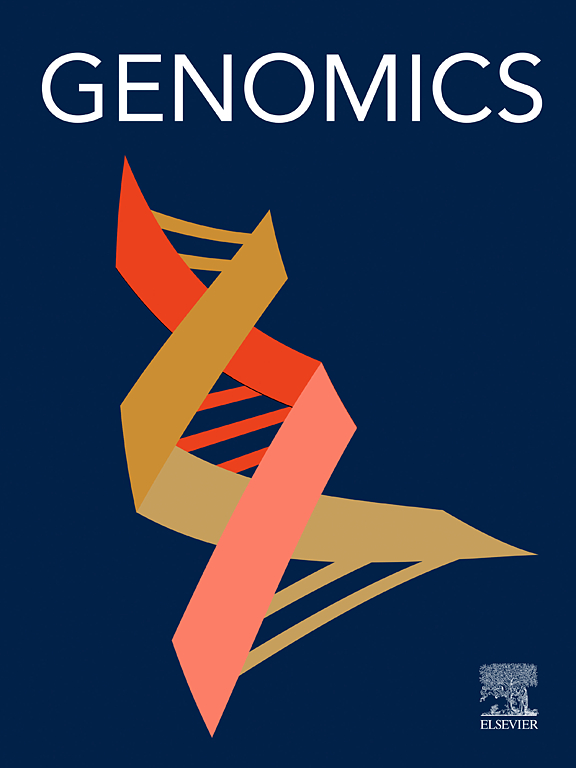长期暴露于马尼拉蛤(Ruditapes philippinarum)的17β-雌二醇:性别比例的变化和基因表达的变化
IF 3
2区 生物学
Q2 BIOTECHNOLOGY & APPLIED MICROBIOLOGY
引用次数: 0
摘要
雌激素广泛存在于水生环境中,引起水生生物的雌性化、性别比例的改变和繁殖力的降低。17β-雌二醇是一种强效雌激素,具有很强的雌激素活性和伪持久性,对全球水生生态系统构成重大威胁。本研究对马尼拉蛤长期暴露于17β-雌二醇的影响进行了研究。17β-雌二醇(10 μg/L)处理2个月后解剖。制备性腺组织切片观察,计算性别比。结果表明,对照组蛤的雌雄比为0.93,接近于1。然而,17β-雌二醇处理的蛤的雌雄比为1.39,比对照组高出近50%。此外,对于对照组的蛤,没有观察到雌雄同体。然而,17β-雌二醇处理的蛤蜊雌雄同体的比例为2%,高于自然环境(约千分之一)。提示长期暴露于17β-雌二醇可能会影响菲律宾沙蚕的性别分化和性别逆转,促使雄性个体逆转为雌性个体。采用比较转录组学方法鉴定了菲律宾沙蚕性别分化相关基因。将雌性和雌性的基因表达谱进行比较,发现3751个差异表达基因(deg),其中雌性上调1512个,雄性上调2239个。同时,比较对照组雌性(DF)和雄性(DM)的转录组谱,鉴定出1718个差异表达基因(deg),其中雌性上调601个,雄性上调1117个。GO (gene ontology)和KEGG (Kyoto encyclopedia of genes and genomes)分析显示,雌激素治疗组和对照组中发现的上述DEGs在泛素化途径、核糖体、吞噬体和细胞色素P450代谢途径中均富集。值得注意的是,在DF和DM比较组合中发现的一些与性别相关的deg富集泛素化。综上所述,外源雌二醇处理可能影响菲律宾蛤的性别分化,丰富了软体动物性别分化的分子机制本文章由计算机程序翻译,如有差异,请以英文原文为准。
Long-term exposure to 17β-estradiol of the Manila clam (Ruditapes philippinarum): Shifts of gender ratio and changes of gene expression
Estrogen is widely distributed in the aquatic environment, causing feminization, changes of gender ratio and reduced fecundity in aquatic organisms. 17β-estradiol is a potent estrogen with strong estrogenic activity and pseudo-persistence, which poses significant risks to global aquatic ecosystems. In this study, effects of long-term exposure to 17β-estradiol in the Manila clam (Ruditapes philippinarum) were investigated. The clams were treated with 17β-estradiol (10 μg/L) for 2 months and then subjected to dissection. Gonadal tissue sections were prepared for observation, and the sex ratio was calculated. The results showed that the female male ratio of clams in the control group was 0.93, which was close to 1. Nevertheless, the female male ratio of the 17β-estradiol-treated clams was 1.39, which was nearly 50 % higher than that in the control group. Furthermore, for clams in the control group, no hermaphrodites were observed. However, for clams treated with 17β-estradiol, 2 % of them were hermaphroditic, which was higher than that in natural environment (approximately one thousandth). It implies that long-term exposure to 17β-estradiol might affect sexual differentiation as well as sexual reversal in R. Philippinarum, promoting male individuals to reverse into female individuals. Comparative transcriptomics was conducted to identify genes related to sex differentiation in R. Philippinarum. Gene expression profiles of the estrogen-treated females (EF) were compared with those of the estrogen-treated males (EM), and 3751 differentially expressed genes (DEGs) were identified, among which 1512 were up-regulated in females, whereas 2239 were up-regulated in males. Meanwhile, the transcriptome profiles of females (DF) and males (DM) in the control group were compared, and 1718 differentially expressed genes (DEGs) were identified, of which 601 were upregulated in females and 1117 were upregulated in males. GO (gene ontology) and KEGG (Kyoto encyclopedia of genes and genomes) analyses showed that the above mentioned DEGs identified in both the estrogen treatment group and the control group were enriched in the ubiquitination pathway, ribosome, phagosome, and cytochrome P450 metabolic pathways. It is noteworthy that some of the gender-related DEGs identified in the comparison combination of DF vs DM were enriched in ubiquitination. In conculsion, the results indicate that exogenous estradiol treatment might influence sex differentiation in R. Philippinarum, enriching the knowledge on molecular mechanisms underlying sex differentiation in mollusks
求助全文
通过发布文献求助,成功后即可免费获取论文全文。
去求助
来源期刊

Genomics
生物-生物工程与应用微生物
CiteScore
9.60
自引率
2.30%
发文量
260
审稿时长
60 days
期刊介绍:
Genomics is a forum for describing the development of genome-scale technologies and their application to all areas of biological investigation.
As a journal that has evolved with the field that carries its name, Genomics focuses on the development and application of cutting-edge methods, addressing fundamental questions with potential interest to a wide audience. Our aim is to publish the highest quality research and to provide authors with rapid, fair and accurate review and publication of manuscripts falling within our scope.
 求助内容:
求助内容: 应助结果提醒方式:
应助结果提醒方式:


